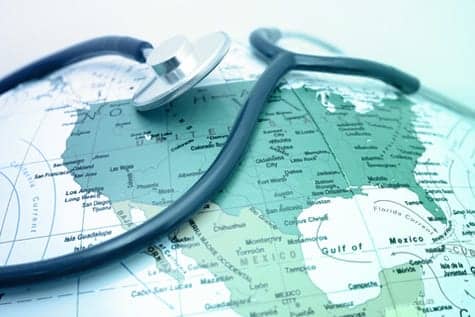The World Health Organization (WHO) has released a new action plan aimed at eliminating tuberculosis (TB). The plan, titled “The Global Plan to Stop TB 2011-2015: Transforming the Fight Towards Elimination of Tuberculosis,” identifies for the first time all the research gaps that need to be filled to bring rapid TB tests, faster treatment regimens, and a fully effective vaccine on to the market. It also shows public health programs how to drive universal access to TB care, including how to modernize diagnostic laboratories and adopt revolutionary TB tests that have recently become available.
“There is an urgent need to scale up action against TB—10 million people, including 4 million women and children, will lose their lives unnecessarily between now and 2015 if we fail,” says Margaret Chan, MD, director-general of the WHO. “TB control works, with global incidence of the disease declining since 2004, although much too slowly.”
Laboratories in most countries are still using a century-old diagnostic method that involves searching for TB bacteria derived from a person’s sputum under a microscope. And there is still not a vaccine able to prevent pulmonary TB, the most common form of the disease.
In addition to helping public health programs adopt already existing modern diagnostic tests, the Global Plan sets a research agenda aimed at engendering two new “while-you-wait” rapid tests that trained staff at even the most basic health outposts can use to diagnose TB accurately. By 2015, the aim is for three new drug regimens—one for drug-sensitive TB and two for drug-resistant TB—to be going through phase III clinical trials. Four vaccine candidates should be at the same stage of testing.
The plan also calls for all TB patients to be tested for HIV by the end of 2015, and if the test is positive, to receive anti-retroviral drugs and other appropriate HIV care. In HIV treatment settings, all patients will be screened for TB and receive appropriate preventative therapy or treatment as needed. Half a million people die each year from HIV-associated TB.
The WHO’s plan calls for $37 billion for implementation of TB care between 2011 and 2015. According to the WHO, a funding gap of about $14 billion—approximately $2.8 billion per year—will remain and needs to be filled by international donors. The plan also includes a separate calculation of $10 billion, or $2 billion annually, to meet funding requirements for research and development. High-income countries and those with growing economies will need to increase their investment in research and development to fill an estimated gap of about $7 billion, or $1.4 billion per year.
In 2006 the WHO’s Stop TB Partnership launched the Global Plan to Stop TB 2006-2015. According to the WHO, the new roadmap for 2011-2015 follows on that earlier plan while setting new and more ambitious targets for the next five years.
Source: World Health Organization










